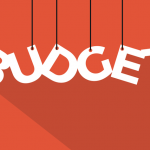Between jotting your idea on a napkin and actually launching a business, there is a process you must follow to determine if your business will succeed or fail. Sometimes, would-be entrepreneurs feel so inspired by their epiphanies that they overlook the importance of examining their viability.
Many people have brilliant ideas, but their businesses don’t achieve the success they were hoping for because there simply aren’t enough people out there who are interested in paying for the products or services they want to sell.
Thorough research is one of the most powerful tools available to you as an entrepreneur because it can make the difference between starting a profitable business and one that is doomed to fail.
And we’d like to stress the word thorough. Asking a few of your friends or acquaintances if they’d buy what you plan to sell doesn’t qualify as thorough. Thorough research should include an in-depth examination of your potential market, industry trends, competitors, and projections of the sector’s growth and direction.
The fundamental question you’re attempting to answer is: are there enough people willing to purchase my product or service at the price I’m willing to sell it for? Luckily, there are a lot of resources you can use to find the answer.
Of course, sometimes an idea succeeds regardless of the lack of market research, but this isn’t something you can count on because most of the time, this oversight results in your idea crashing and burning. We’d like to help you avoid that with our short guide on how to research a business idea before committing.

The Idea Stage
For many entrepreneurs, coming up with an idea and visualizing the possibilities is easy, but market research doesn’t come as naturally. As we’ve mentioned before, entrepreneurs often become so passionate about their ideas that they pursue them full-throttle instead of taking the time to figure out how their ideas will address an unmet need in the market and how to best invest their resources.
The whole point of doing market research is to assess how much potential your idea has. A simple visit to the library or a few hours spent online can help you get a better understanding of your target audience. The knowledge you gain through research will let you know if you can go ahead with your idea, you need to refine it, or you have to return to the drawing board.
Make a list of the questions you’ll need to address during your research and devise a strategy for tackling them. Your list should include the following questions:
- What is the problem that my product or service solves?
- Who is most likely to purchase my product or service?
- Why will they want to purchase it?
- Where are they going to purchase it — specialty shops, department stores, online?
- What price do I need to charge in order to generate a good profit, and will my potential customers want to pay it?
- Which products or services will be in direct competition with mine?
You can do market research on your own, but it’s important to learn about research from experts since they can advise you on the most appropriate type of research, assist you in developing statistically valid samples and writing questionnaires, and serve as an objective source of information.
The sort of information you need to examine will vary according to the type of product or service you plan to sell and your overall business objectives. You can conduct research to identify a potential market, assess the competition, or determine the value and positioning of your product or service.
Determine Your Target Market
Determining your target market is the first step in validating your business idea. You cannot accurately evaluate the potential of your business model until you have a firm grasp of your audience, its size, and purchasing habits, among other criteria. You can create a profile of your ideal customer using your own observations and analyses, third-party market research, and feedback from mentors, collaborators, and test users.
The more precisely you can describe and predict your ideal customer, the greater the likelihood that your business will be able to predict and meet their expectations. Some of the characteristics you should focus on are age, gender, location, income, level of education, and occupation.
Once you’re identified your target audience, you have to assess the size of the market, how competitive it is, and whether there is room for your product or service. To learn more about your target market, you might also want to organize surveys and focus groups.
Research Your Competition
During the early stages of your research, you’ll probably learn that other businesses are selling similar products or services, but this does not mean that your business model is bound to fail. Being up against competitors emphasizes the importance of strengthening the value of your product or service and thinking of strategies to get some leverage.
You’ll need to develop a USP – a unique selling proposition. As the name implies, a USP should help you set your company apart from the competition.
Just as you need to identify and connect with your target audience prior to establishing your business, you must also understand who else is competing for their attention. You’ll need to learn about the products or services they offer, their pricing strategies, market positions, branding, and reputation.
You should divide them into three categories:
- Direct competitors – they offer the same products or services to the same people
- Indirect competitors – they offer slightly different products or services to different people within the same market
- Substitute competitors – they offer different products or services that serve the same purpose to the same market.
Of course, you’ll also want to determine the strengths and weaknesses of your competitors and how they are perceived by your target audience by visiting their locations, reading reviews, and conducting surveys.
The next step is to identify your own unique strengths that will appeal most to your customers. You can use them to create your brand image and messaging.











